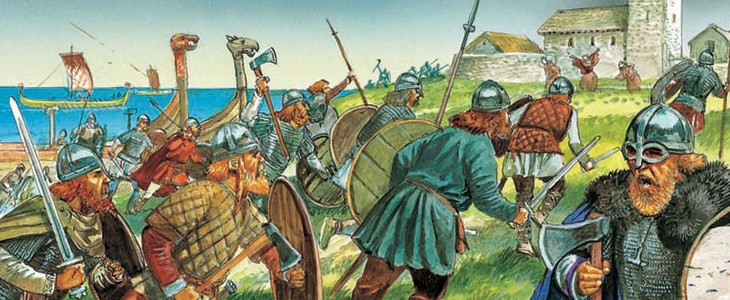The Danegeld Land Tax – 810

The Danegeld, or Dane tribute, was a tax raised to pay tribute to the Viking raiders to save a land from being ravaged. The tax was collected from the citizens and jointly used to buy off the attackers, and also pay the defence forces a wage.
In 810 a Danish fleet of two hundred vessels landed in Frisia and defeated the Frisians in three battles. The victorious Danes then demanded a large tribute from the conquered. To meet this obligation the first danegeld was levied on the citizens of Frisia to raise one hundred pounds of silver.
The Danegeld was effectively a land tax and assessed on an area of land known as a hide. A hide was the area of land sufficient to support one family. The tax was inexact as it was assessed not on land size or value, but on assessments of land productivity. The tax was farmed (collected) by local sheriffs.
The tax was unpopular as it was a flexible instrument of taxation and not levied equitably. Exemptions and reductions were granted by the royals to their favoured friends.
The only way to avoid or minimise the tax was to curry favour with the royals, or convince the tax farmers that your land was not very productive.
"You’d be stupid not to try to cut your tax bill and those that don’t are stupid in business"
- Bono: U2




